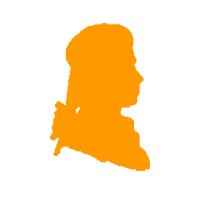| Fauré, Gabriel - "Papillon" for Viola & Piano Op. 77 Alto et Piano (ou orgue) |
VoirPDF : "Papillon" (Op. 77) for Viola & Piano (16 pages - 370.44 Ko)30x⬇ VoirPDF : Piano (113.58 Ko) VoirPDF : Alto (121.33 Ko) VoirPDF : Conducteur complet (237.09 Ko) MP3 : "Papillon" (Op. 77) for Viola & Piano 4x⬇ 62x
| Compositeur : | Fauré, Gabriel (1845 - 1924) | ||||
| Instrumentation : | Alto et Piano (ou orgue) | ||||
| Genre : | Romantique | ||||
| Arrangeur : Editeur : | MAGATAGAN, MICHAEL (1960 - ) | ||||
| Droit d'auteur : | Public Domain | ||||
| Ajoutée par magataganm, 22 Nov 2023 Gabriel Urbain Fauré (1845 – 1924) was a French composer, organist, pianist and teacher. He was one of the foremost French composers of his generation, and his musical style influenced many 20th-century composers. Among his best-known works are his Pavane, Requiem, Sicilienne, nocturnes for piano and the songs "Après un rêve" and "Clair de lune". Although his best-known and most accessible compositions are generally his earlier ones, Fauré composed many of his most highly regarded works in his later years, in a more harmonically and melodically complex style. He was born into a cultured but not especially musical family. His talent became clear when he was a young boy. At the age of nine, he was sent to the École Niedermeyer music college in Paris, where he was trained to be a church organist and choirmaster. Among his teachers was Camille Saint-Saëns, who became a lifelong friend. After graduating from the college in 1865, Fauré earned a modest living as an organist and teacher, leaving him little time for composition. When he became successful in his middle age, holding the important posts of organist of the Église de la Madeleine and director of the Paris Conservatoire, he still lacked time for composing; he retreated to the countryside in the summer holidays to concentrate on composition. By his last years, he was recognised in France as the leading French composer of his day. An unprecedented national musical tribute was held for him in Paris in 1922, headed by the president of the French Republic. Outside France, Fauré's music took decades to become widely accepted, except in Britain, where he had many admirers during his lifetime. Fauré's music has been described as linking the end of Romanticism with the modernism of the second quarter of the 20th century. When he was born, Chopin was still composing, and by the time of Fauré's death, jazz and the atonal music of the Second Viennese School were being heard. The Grove Dictionary of Music and Musicians, which describes him as the most advanced composer of his generation in France, notes that his harmonic and melodic innovations influenced the teaching of harmony for later generations. During the last twenty years of his life, he suffered from increasing deafness. In contrast with the charm of his earlier music, his works from this period are sometimes elusive and withdrawn in character, and at other times turbulent and impassioned. Following the publication by Julien Hamelle of the Élégie, Fauré was immediately commissioned to write a second piece for cello, perhaps as a lighter counterpart. But again there was a delay in publication, this time of fourteen years until 1898. On this occasion some responsibility might lie with the increasingly sour relations between composer and publisher, whose incompetence extended to actually losing manuscripts and who insisted on calling the piece first Libellules (Dragonflies), then Papillon (Butterfly); to which Fauré, no lover of fancy titles, retorted: ‘Butterfly or Dung Fly, call it whatever you like.’ The five sections of Papillon contain contrasting material: the odd-numbered ones might equally be a French ‘Flight of the Bumblebee’, pre-empting Rimsky-Korsakov’s 1899 version; in the two enclosed sections the cello sings a lyrical, symmetrical song that finally takes wing over one of Fauré’s favourite descending bass lines. Source: Hyperion (https://www.hyperion-records.co.uk/dw.asp?dc=W9547_GBA JY0118424) Although originally composed for Cello & Piano, I created this Transcription of "Papillon" (Butterfly Op. 77) for Viola & Piano. Partition centrale : | Papillon (2 partitions) | | |||
Par annadahl, 23 Nov 2023 à 23:51
Thank you, Michael!
I’ll start with this one tomorrow morning! |









